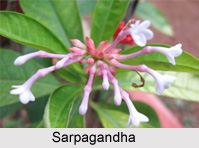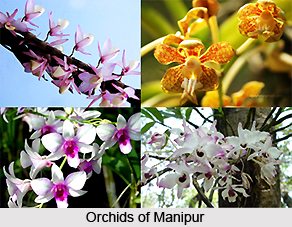 Aerva lanata is generally prostrate herb with woolly branches arising from a woody base. The leaves of the plant are simple, alternate, short-petioled and are elliptic-orbicular to obovate. The leaves are about 1.3-3.5 centimetres long and 0.8-2.5 centimetres wide. They have grown gradually smaller toward apices, glabrate or finely pubescent above with white woolly beneath. The flowers of the plant are minute, sessile, greenish or creamy-white in colour. They are borne in axillary spikes and three or four leaves are clustered together. Fruits of this plant are ovoid, acute. The seeds are black and bean-shaped. The plant bears fruits and flowers from September to March.
Aerva lanata is generally prostrate herb with woolly branches arising from a woody base. The leaves of the plant are simple, alternate, short-petioled and are elliptic-orbicular to obovate. The leaves are about 1.3-3.5 centimetres long and 0.8-2.5 centimetres wide. They have grown gradually smaller toward apices, glabrate or finely pubescent above with white woolly beneath. The flowers of the plant are minute, sessile, greenish or creamy-white in colour. They are borne in axillary spikes and three or four leaves are clustered together. Fruits of this plant are ovoid, acute. The seeds are black and bean-shaped. The plant bears fruits and flowers from September to March.
Aerva lanata is called `chaya` in Bengali; in Gujarat it is named as `kapurimadhvir` and `pulai` in Tamil Nadu whereas in Sanskrit it is termed as `astamabayda` and `buikallan` in Punjab. In fact it is a common weed found throughout India at up to nine hundred metres elevation. This plant is found in abundance in drier regions of the Old World tropics and sub-tropics.
Aerva lanata serves the purpose of anthelmintic and medication that soothes inflamed or injured skin. It is also in use for the treatment of lithiasis, cough, sore throat, indigestion, wounds and as a specific for diabetes. For any irritation and problematic skin this plant is used widely in Rajasthan. The people of Bihar use the plant as a treatment of diarrhoea, cholera and dysentery. The decoction of the plant is used as a diuretic. The extract of the plant is given to reduce fever among the Paharia in southern Bihar.
The tribal inhabitants of south-central Andhra Pradesh take the leaf juice as an effective remedy to expel kidney stones. The roots are also diuretic and demulcent, and are credited with tonic properties. The roots are used to treat strangury in Ayurveda. The people of southern Orissa use a decoction prepared by boiling the roots, along with the tuberous roots of Cyperus mtundus (Cvperaceae) and fennel seed (Foeniculum vulgare: Umbelliferae) is given to treat diarrhoea among the children. The Rabaris in the Barda Hills of Gujarat consider the ground root with yoghurt for treating jaundice. To relieve severe headache the roots and flowers are used.
Not only the roots and stem of the plant the flowers are also in high demand in Ayurveda as well as pharmaceutical products. The flowers are reportedly useful for dissolving kidney stones, treating gonorrhoea and, in combination with other herbs, for conjunctivitis.











